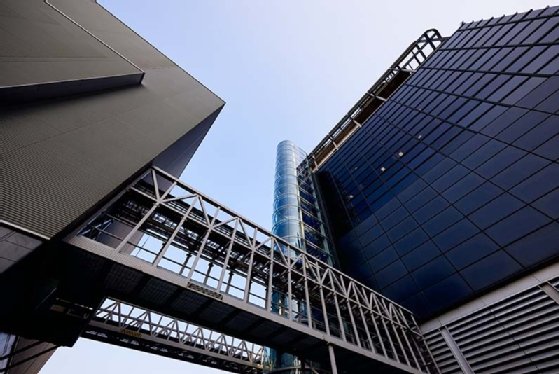Telehouse has gone live with the first phase of its fifth colocation facility in London Docklands, which is located on the former site of a Thomson Reuters datacentre.
The first phase of the carrier-neutral colocation provider’s buildout of the site – known as Telehouse South – has been under development for just under a year, and has capacity for up to 668 server racks and 2MW of IT load. This looks set to be bolstered by the end of 2023 through further upgrade works, which the company anticipates will bring online an additional 0.7MW of IT load.
The initial datacentre buildout effort has focused on remodelling the first floor of the 10-storey building that makes up Telehouse South. On completion, the site will have a total power capacity of 18MW and up to 12,000m2 of colocation space, it is claimed.
The buildout is billed by the firm as its most ambitious infrastructural and aesthetic refurbishment to date, with the redevelopment of the site expected to cost up to £223m by the time of its completion.
Sustainability and speed
As recently detailed by Computer Weekly, datacentre operators are being encouraged to prioritise the redevelopment of existing buildings for sustainability reasons when seeking to meet the ever-growing demand from enterprises and hyperscalers for additional datacentre capacity.
During a tour of the completed first-floor data hall, a company representative confirmed this was one of the reasons why the firm had opted to take over an existing site, rather than build a new facility in the area from scratch.
Paul Lewis, senior operations director at Telehouse Europe, said the decision to repurpose an existing site was also driven by an urgency to bring online additional colocation capacity for its clients as soon as possible.
“It was the increasing demand from our customers for hybrid IT infrastructure, unrivalled connectivity and extra capacity that was the main driver behind this project, and it was the reason we chose to refurbish an existing datacentre,” he said, during an address at the Telehouse South launch event.
“With time being of the essence, building a new facility from scratch would have taken too long and…choosing the site of one of the first datacentres in the Docklands area as the location for this project wasn’t a coincidence – it was a strategic decision,” he continued.
Telehouse South is on course to become the biggest datacentre in the company’s Docklands campus and, as is the case with the other four sites it has located there, is powered by 100% renewable energy procured from certified wind, solar, biomass and hydro generators.
Datacentres of importance to London
The company opened its first datacentre – Telehouse North – in the area 32 years ago. In that time, its Docklands campus has grown to become an “international internet exchange hub” that is now responsible for handling more than half of Europe’s public internet traffic, said Rajesh Agrawal, deputy mayor of London for business, during the Telehouse South launch event.
The UK’s commercial datacentre sector is of huge global importance, he continued, and has an important role to play in attracting foreign direct investment from overseas tech firms.

“The new datacentre will significantly increase London’s position as a tech hub. And this is a vote of confidence for London and for the UK in a post-Brexit era,” said Agrawal.
“This latest investment by Telehouse not only significantly contributes to the local economic environment, but also to the wider UK and London technology ecosystem by providing a new key critical national infrastructure.”
At the same time, sites like the one that Telehouse is redeveloping are increasingly needed to help underpin the digital transformation plans of UK businesses and deliver the services that users rely on to go about their daily lives, which in turn is fuelling the ever-growing demand for colocation capacity in the capital.
“Managing all that data without a parallel increase in datacentres is a challenge, so we need more of these, not less of these,” he said.
And this is why, he added, the mayor’s office is committed to supporting the future growth of London’s datacentre sector.
“Our new London plan takes account of the needs of datacentres and recognises that they depend on reliable connectivity and electricity infrastructure, [and that] warehouse-based datacentres have emerged as a drive for industrial demand in London over recent years,” he said. “We are starting to take this into account when accessing demand for industrial land.”













